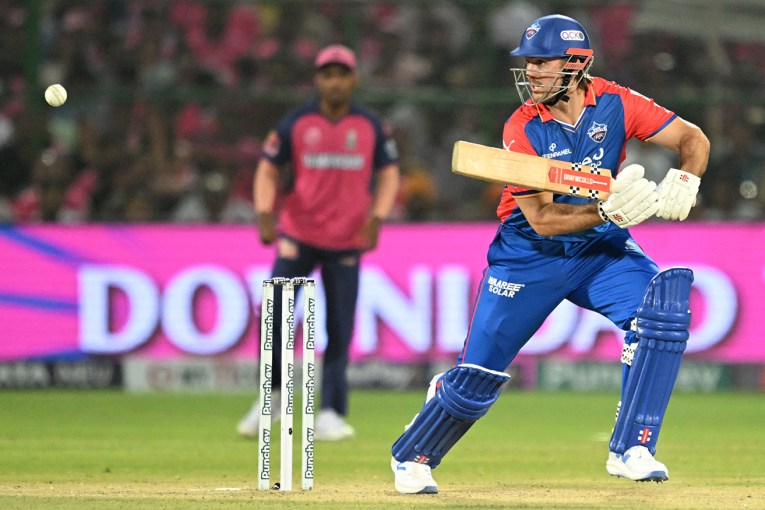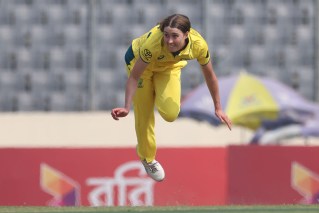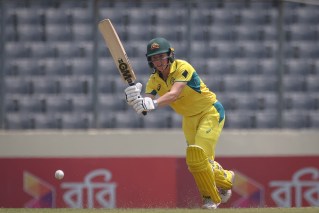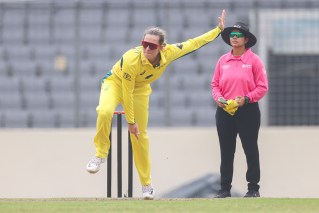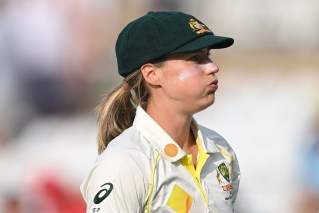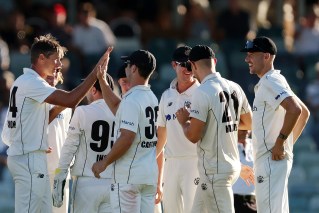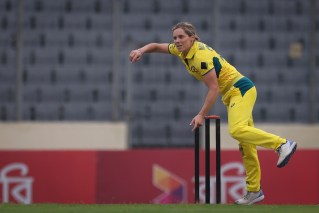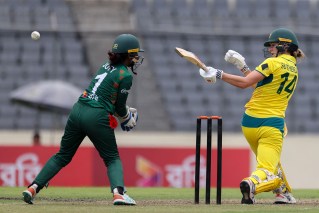Clarke’s Test career on the edge of collapse

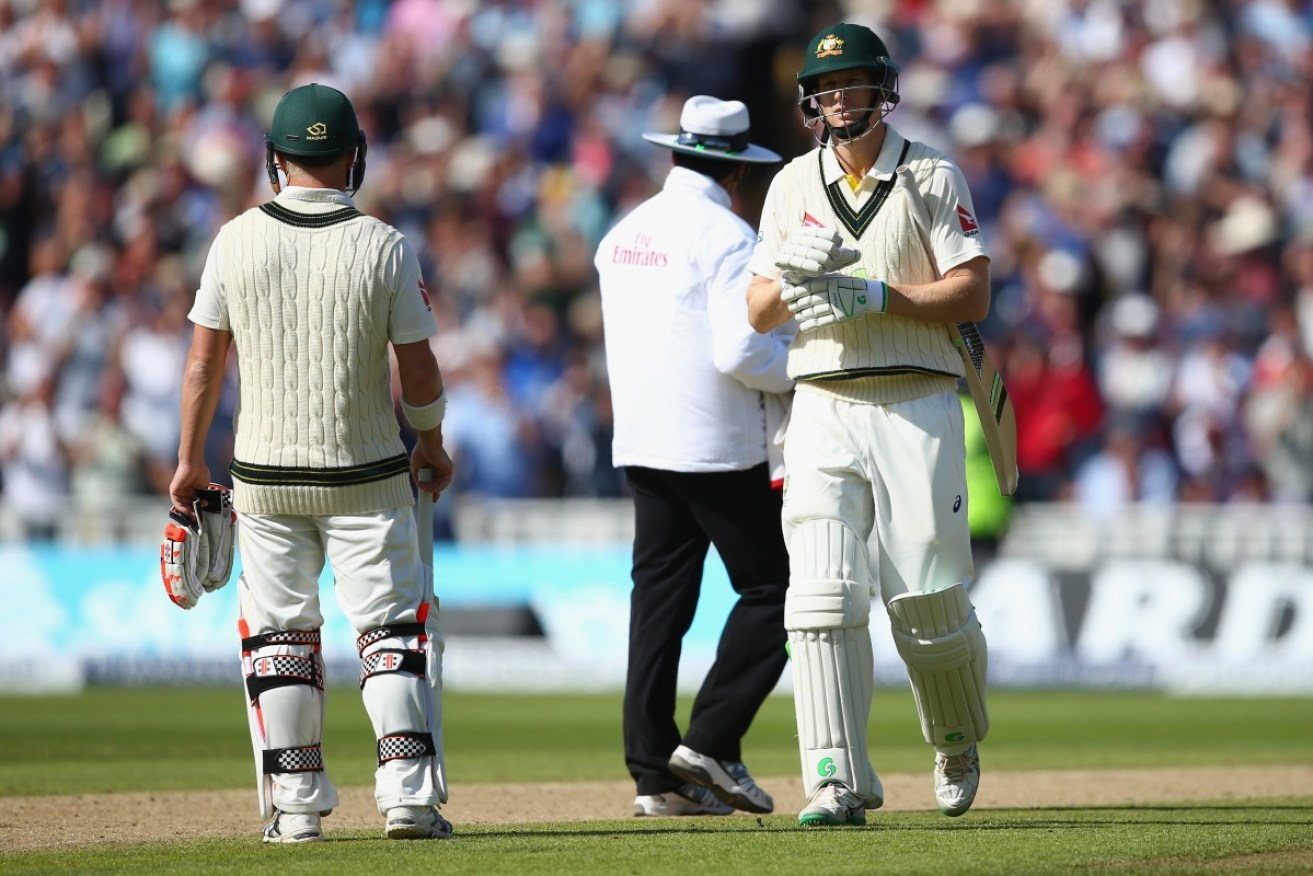
It might be more likely that recent Test debutant Adam Voges will be dropped. Photo: Getty
There was an inevitability about Michael Clarke’s dismissals amongst the chaos and carnage of Edgbaston’s first two days.
Twice he walked out early with the team in trouble. Twice the commentators mumbled lines about captain’s knocks and the need for a big performance.
Twice he stood hurriedly poking, prodding, edging, playing, missing, swishing, stumbling over. Twice he lasted less than half an hour for a handful of runs. Neither time was it any surprise to see him walking back.
• Steven Finn puts England on the verge of victory
• Rogers denies Aussie complacency
• Every AFL captain backs Adam Goodes

Clarke’s bat has failed to fire so far in this Ashes series. Photo: Getty
It is not like Clarke had the only failure. The first innings saw 10 Australian batsmen fail to top 16, and seven have not passed 14 so far in the second. It has been less a Test match performance and more a Jerry Lewis food fight.
But as the team fell to pieces, the captain could do nothing to save it. For an ever-lengthening spell he has been out of runs. His footwork has gone. His movement to the ball is stiff, his shots do not flow freely at it.
Even his batting against a second-string Derbyshire XI in the preceding tour match was clearly constrained.
After the second Test, the comparisons to 1997 were all about an Australian team surging back from 1-0 down to win an Ashes tour. During the third, a different parallel has emerged.
As Grandstand’s Adam Collins wrote on Twitter, “we’ve now crossed the point where if Clarke wasn’t captain he’d be dropped. Like [Mark] Taylor in 1997”.
Clarke’s lean run began after December 6, 2013. On that day he made a century at Adelaide, 148 against England in the first innings to drive home the advantage won at Brisbane.
In the year and eight months since, Clarke has walked to the crease in Test match cricket a further 28 times. Twice he has returned with centuries, two of his finest given the circumstances of their attainment.
His 161 not out to set up a series win in Cape Town was scored with a broken arm against a bouncer barrage from Dale Steyn and Morne Morkel. His 128 against India defied his own body and emotional state days after losing close friend Phillip Hughes.
They may go down as his two finest innings, and you cannot detract from the accomplishment. But neither can you shy away from what has happened around them.
Clarke’s next-best score in that patch is 47. Only half his innings have passed 10. He averages 29.87. Today his career average dipped below 50 for the first time since his run of double-centuries in 2012.
Look at it another way: Clarke has passed 50 twice in that period, as many times as Joe Burns did from four innings. Shane Watson, Shaun Marsh and Brad Haddin have done it four times, Chris Rogers 14 times, Steve Smith 16 and David Warner 17.

The last Ashes triumph on home soil will seem a long time ago as Clarke toils in England. Photo: Getty
The comparisons with Taylor are numerous and intriguing: Both were captains valued for their tactical insight and influence. Both were brilliant catchers at slip, and both were retained because of an anxiety that their omissions would cause instability.
Their slumps also show remarkable confluence. Put aside Clarke’s centuries as anomalies for a moment: not to massage the figures into looking worse, but to get a sense of what is happening in most innings, most of the time. Centuries are an arbitrary marker; batsmen provide value without them.
Taylor’s slump lasted 18 months and 21 innings. Four of them passed 30, four others passed 20, 13 were under 20 and six of those were single figures. His average for that time was 18.35.
Clarke’s slump has lasted 20 months and 26 innings. Four of them passed 30, four others passed 20, 18 were under 20 and 12 of those were single figures. The average for those innings is 18.09.
Taylor’s advantage was that when he broke the drought he was a year younger than Clarke, and did not have his own body fighting his ambitions.
But could anyone fill the void?
In Clarke’s case there is no surfeit of first-class batsmen waiting to take his place.

It might be more likely that recent Test debutant Adam Voges will be dropped. Photo: Getty
The options are few. You would hardly back Marsh to get any more runs than the current XI during a nick-off competition on a seaming pitch. In a world that only considered form, we would even have the comedy-rich prospect of Watson replacing the captain who loves him so.
With Australia’s dismal batting, a typical Watto 30 from 60 balls would be a sterling contribution.
But the way hierarchies work, Clarke is certain to be retained. Marsh is more likely to replace the struggling Adam Voges. Dropping a captain lets loose the pheromones of panic, and England would note the scent joyfully Australia is fused as stiffly into place as Clarke’s lower vertebrae.
None of this is meant with ill-will: most of us writing words like these would love Clarke to prove them wrong. It is simply that the physical capacity to do so may now be beyond him. There looks little left of the fleet feet we knew.
All similarities to Taylor aside, what stood out on the second day was one difference: in 1997, Taylor came to Edgbaston and ended his drought with a century. In 2015, Clarke came to Edgbaston and made 10 and 3.
Win or lose the series, the Australian captain has four Test innings to show that he can still compete. If not, they will be his last.
